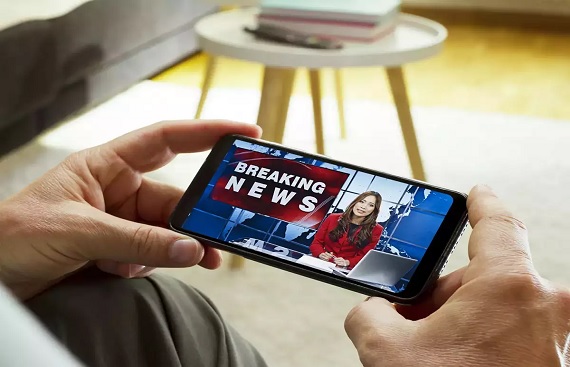Ministry of information and broadcasting Tests D2M Broadcast Tech Pilot
By
siliconindia | Wednesday, 17 January 2024, 16:42 IST

The Ministry of Information and Broadcasting (I&B) is in the early stages of discussing a pilot test for direct-to-mobile (D2M) broadcast transmissions. This technology, outlined in a 2022 paper by the Indian Institute of Technology (IIT) Kanpur, is facing resistance from telecom operators and other tech companies. D2M broadcasting, as described in the paper, offers a method for multimedia broadcasting that doesn't rely on data connectivity. While it is currently used for emergency government notifications, the proposed pilot aims to demonstrate its potential for delivering television and multimedia content directly to smartphones. This initiative aims to provide content-driven services to users who lack direct access to mobile data.
Information and broadcasting secretary Apurva Chandra said, “The pilot launch will be the first step; you need a certain chip in devices. We’ve to see how that adoption takes place. Then, we’ve to see how much content is being consumed we’ll take all of this into consideration before launching at a mass scale. As of now, we’re not mandating any smartphone company or telecom operator, since this is only a pilot". This shift implies that smartphones intending to adopt the technology will need to incorporate either a dedicated chip or an additional dongle. Saankhya Labs, based in Bengaluru, has introduced a chip designed for this purpose, asserting its capability to engage millions of users in the realm of D2M broadcasting.
“The key to bringing the technology to a wider audience will lie in achieving scale. We are already in talks with original design manufacturers (ODMs), but we won’t need to partner with chipmakers for this. Our objective is to reach a scale of 10 million-odd users to distribute the technology with, which should be possible given that the market has over 1 billion devices and users. At such a scale, the addition of our chip in Android smartphones will only lead to a cost addition of around $2.5 per device," said Parag Naik, chief executive of Saankhya Labs.
S. P. Kochhar, director-general of industry body, Cellular Operators Association of India (Coai) said that concerns around the technology remain "on the aspects of the level playing field, spectrum allocation, network integration and regulatory and cost arbitrage, in favour of the proposed public-private partnership model and against the telecom service providers. Building a dedicated D2M network by earmarking spectrum specifically for the broadcasting infrastructure, and providing competing or complementary services, would lead to a breach of a level playing field. Offloading cellular networks also requires a close integration of broadcasting capabilities with cellular networks, so that the spectrum and infrastructure can be optimally leveraged for broadcasting and IMT services as per the demand. A dedicated D2M network, built by a third party, will not be able to achieve these aspects optimally".
Chandra, however, affirmed that a legitimate use case remains for D2M broadcasting. “There are about 280 million households in the country, of which only about 190 million have TV. This means that still, nearly 90 million households still do not have televisions. At the same time, the number of smartphones in India is 800 million and is expected to rise to 1 billion. This is why D2M broadcasts offer tremendous opportunities. This can also lead to an increase in data consumption, which is expected to reach 43.7 exabytes per month this year. Nearly 69% of this data consumption occurs because of video content streaming. Even if 25-30% of it can be offloaded to D2M broadcasts, this can tremendously help reduce loads on 5G networks", he said.
Read More News :
Immerso AI and Yotta Forge Strategic Partnership in Generative Media
Microsoft Launches Copilot Pro for Universal Access to AI-driven Office Features
